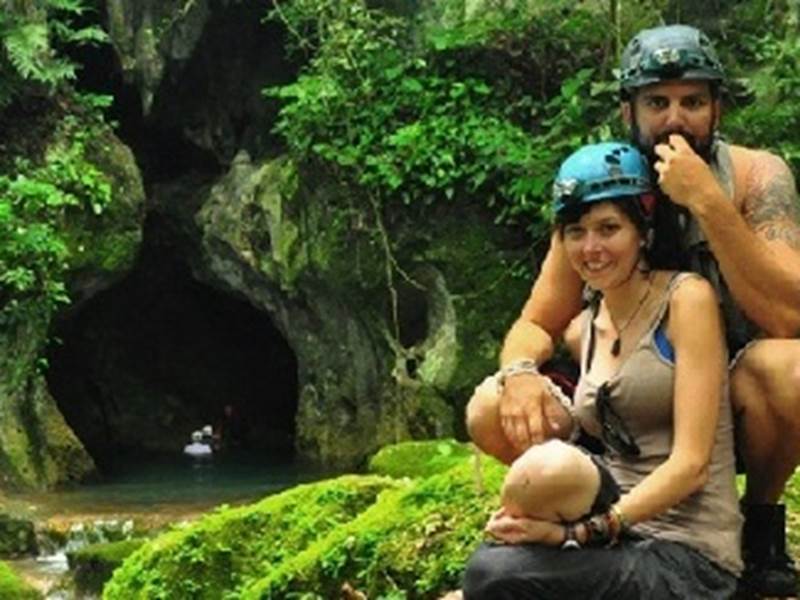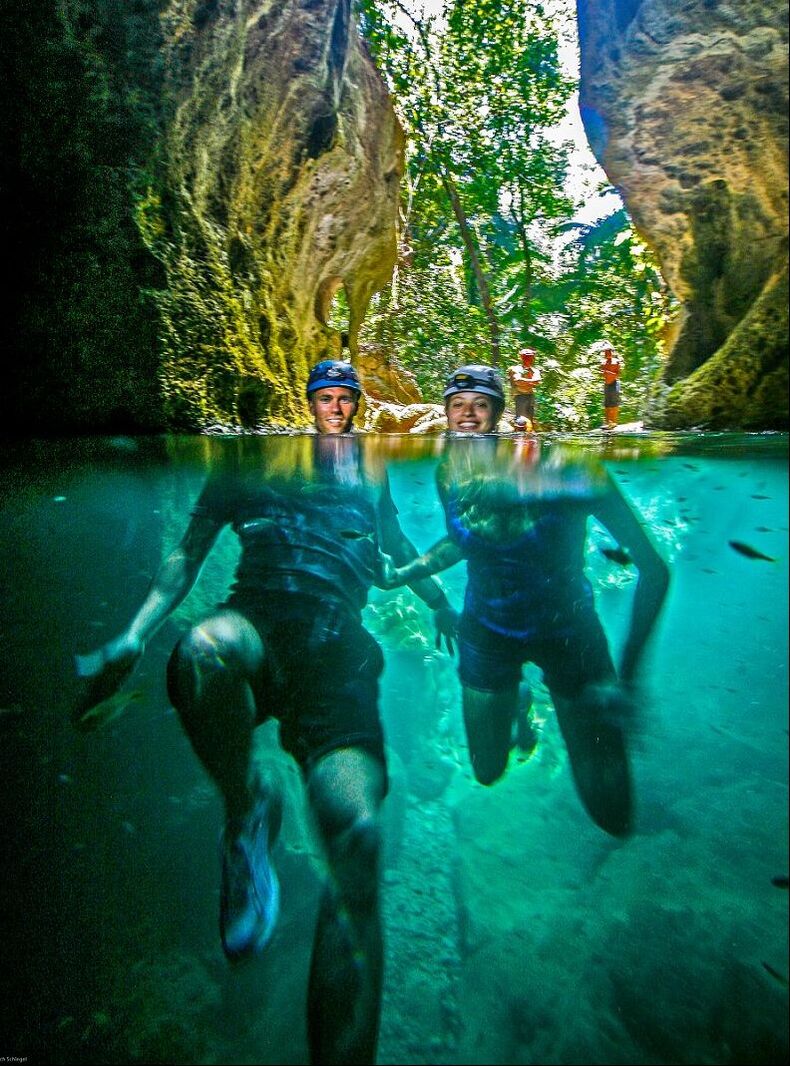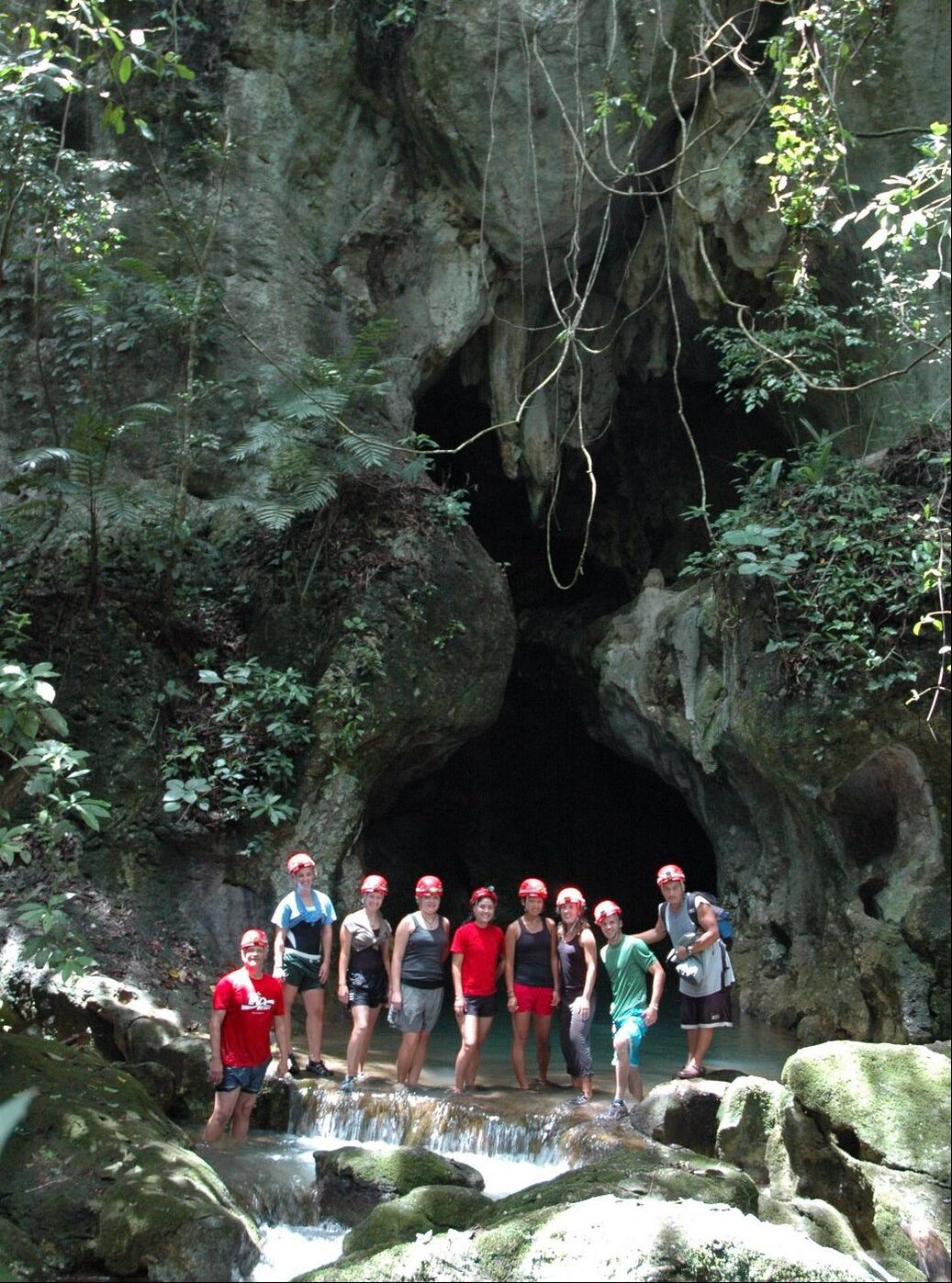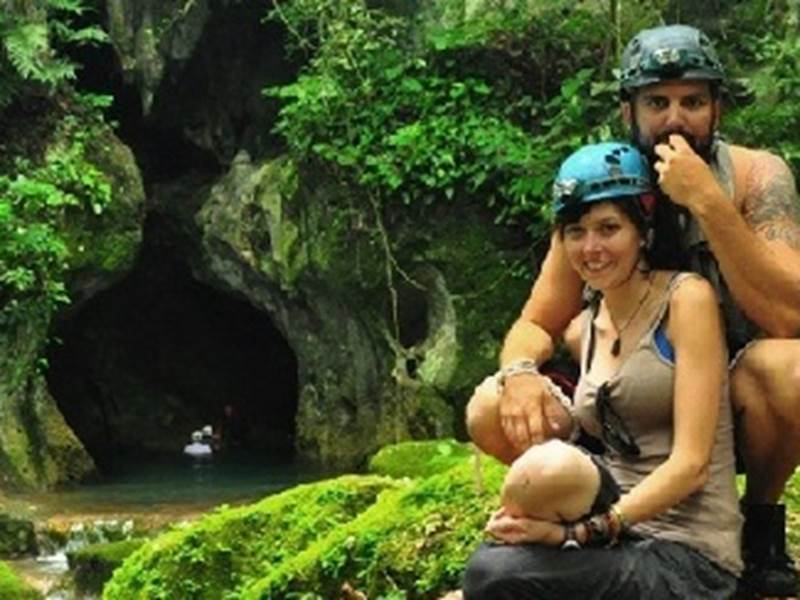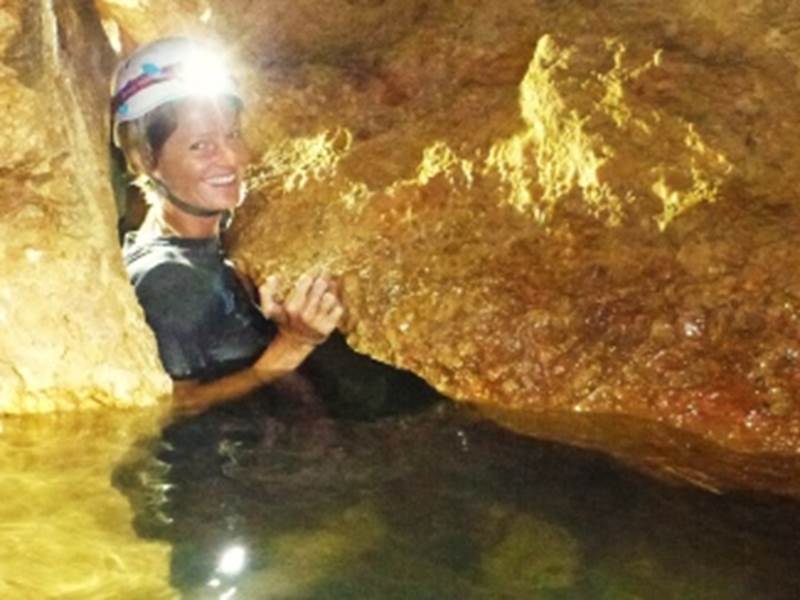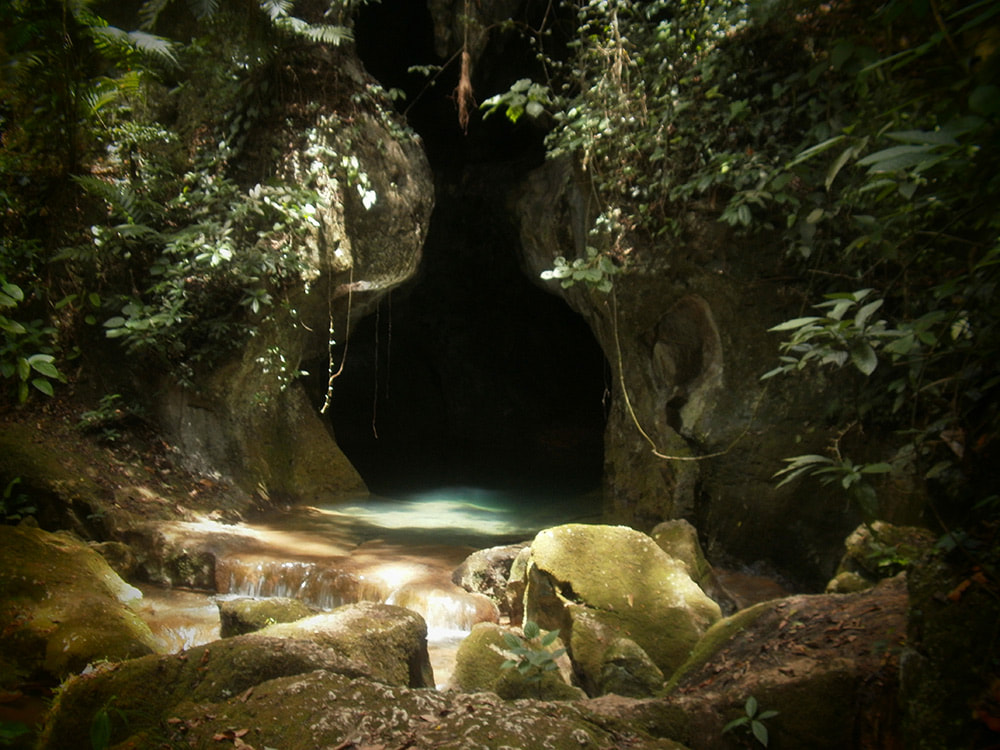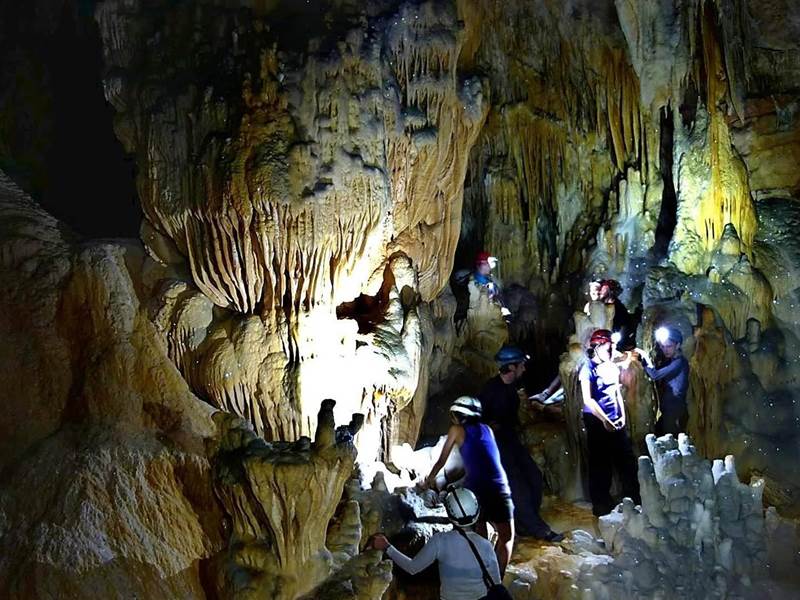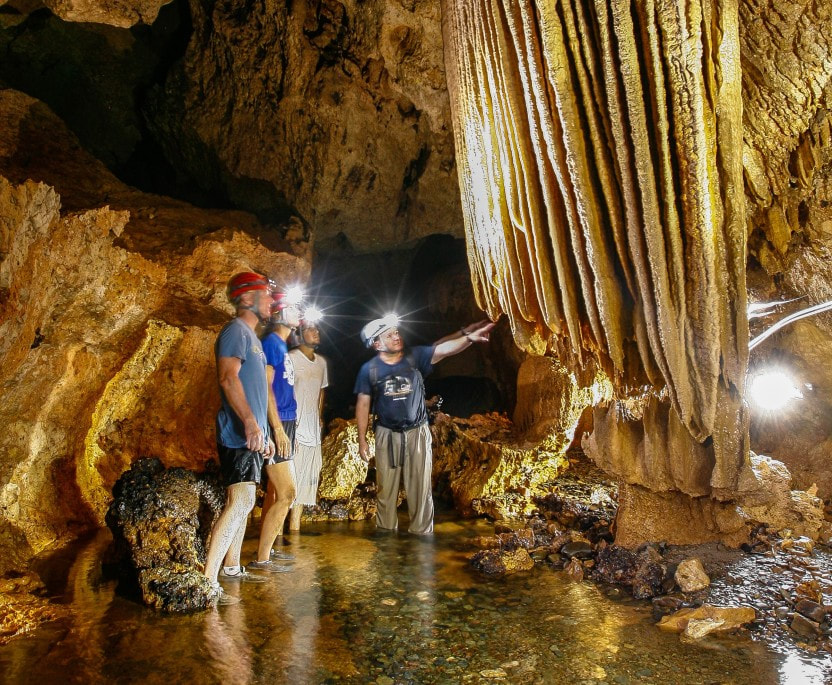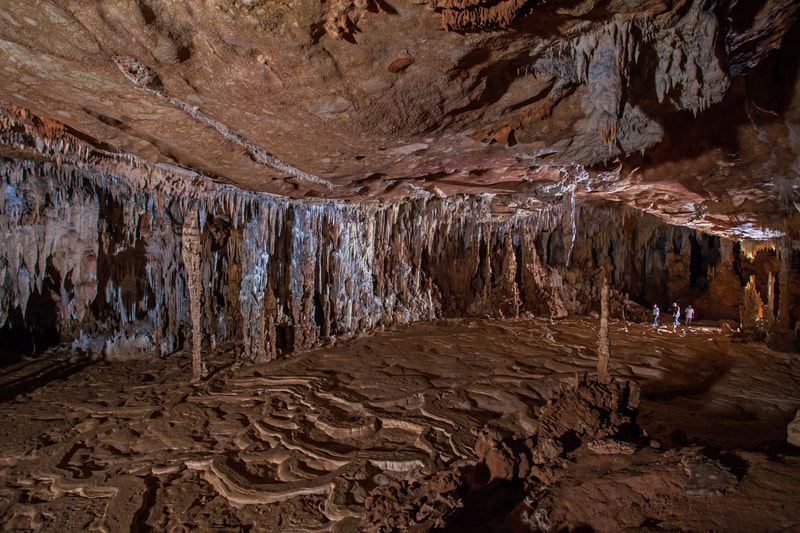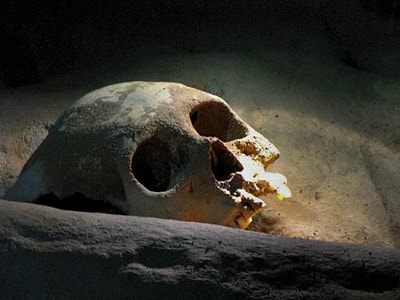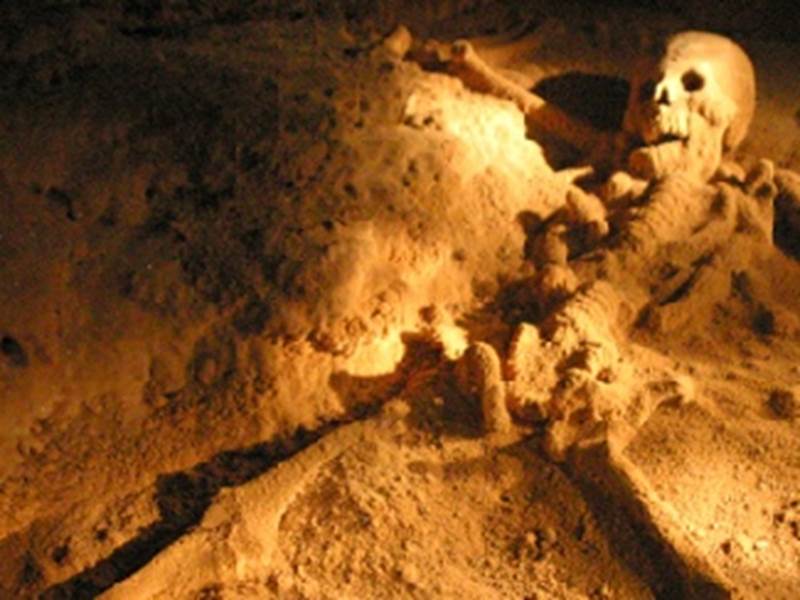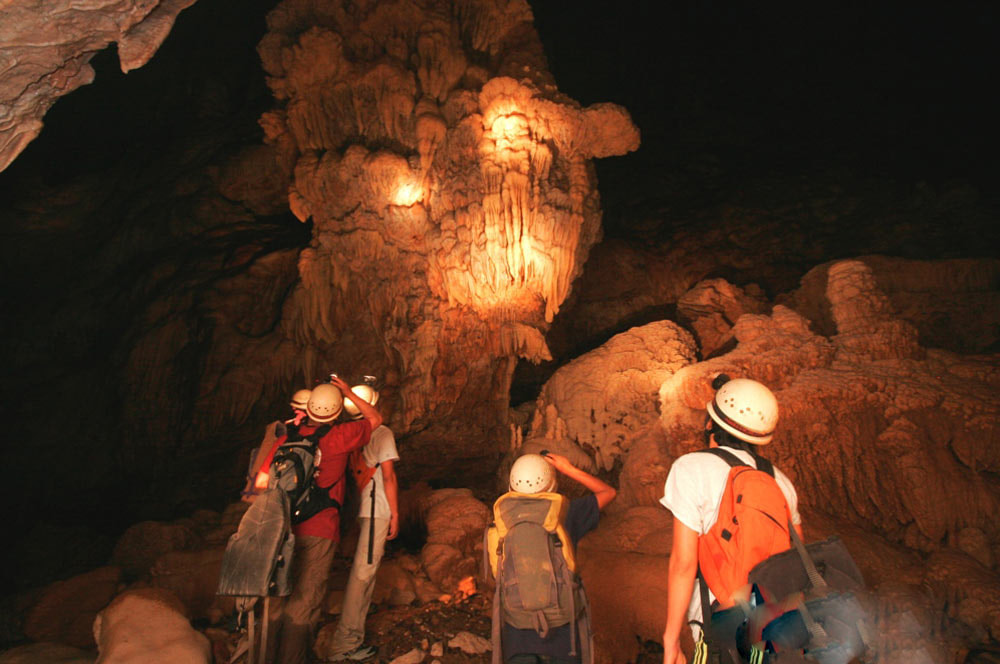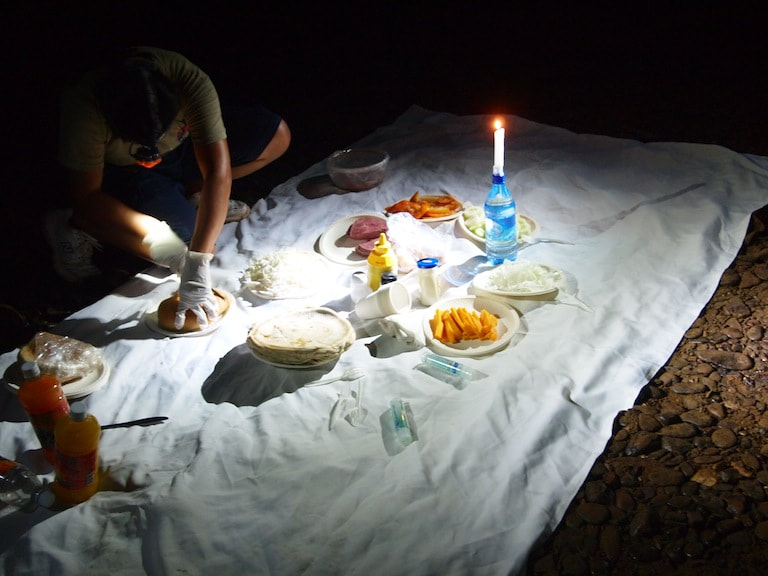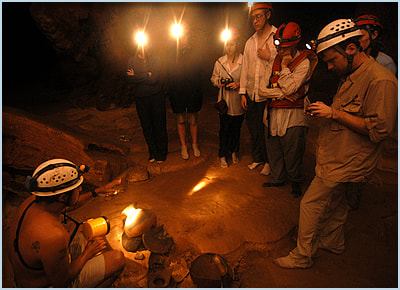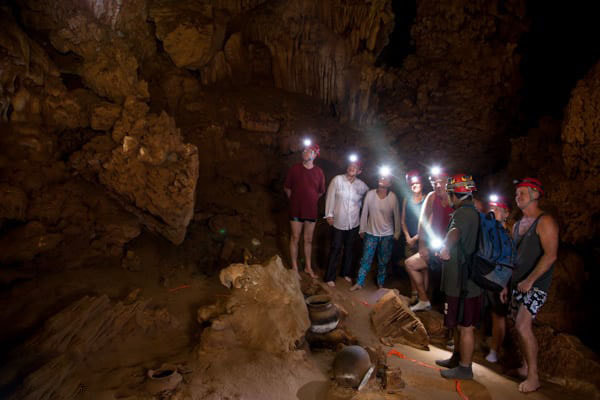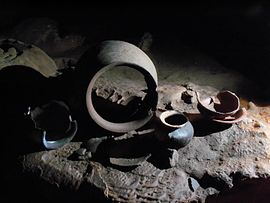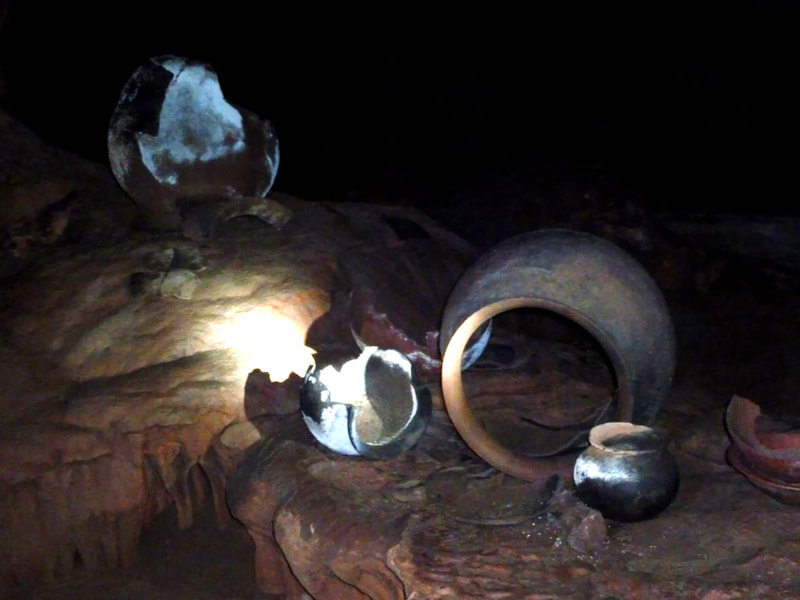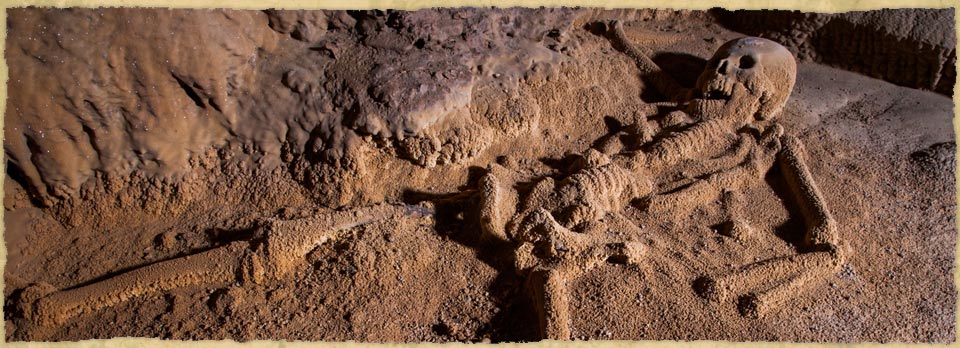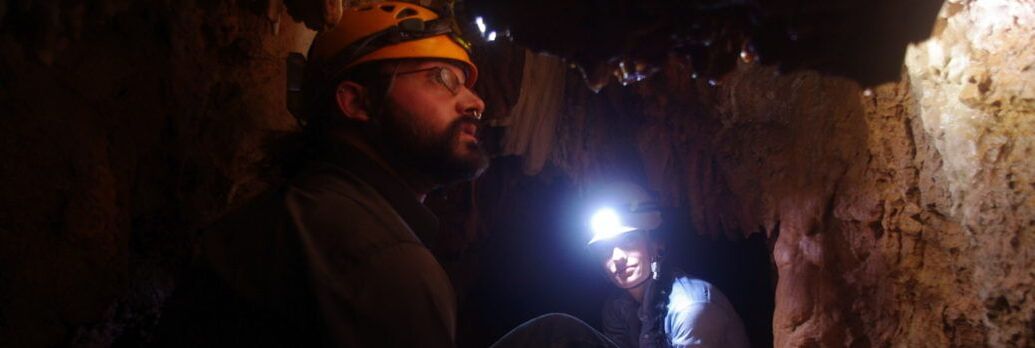ATM CAVE (Actun Tunichil Muknal)
Why consider taking a cave adventure?
Actun Tunichil Muknal Cave (ATM Cave) Even to the untrained eye, a peek inside a cave that was once home to an ancient civilization holds plenty of fascination. Rock walls. Strange ceiling and floor projectiles formed as water and minerals dripped and solidified for centuries. Spiders, bats and even fish coexist nicely, yet for the purist, no cavern is created equal—especially if that cave happens to be Belize’s Actun Tunichil Muknal Cave, otherwise known as the ATM Cave. This stronghold of ancient Mayan secrets and rituals will keep you spellbound from the moment you arrive.
Once your eyes are accustomed to varying shades of black to grey that fill the ATM’s interior and you turn on your helmet light, you’ll spot the interiors of chamber after chamber until you arrive at The Cathedral. The cave’s most dramatic finds are here, including calcified skeletal remains of “The Crystal Maiden” whose bones sparkle like jewels due to centuries of mineral buildup. She’s not alone. Scan shelves and nooks to discover bones, relics, pottery and other ancient treasures in the dark silence of this inner chamber.
Once your eyes are accustomed to varying shades of black to grey that fill the ATM’s interior and you turn on your helmet light, you’ll spot the interiors of chamber after chamber until you arrive at The Cathedral. The cave’s most dramatic finds are here, including calcified skeletal remains of “The Crystal Maiden” whose bones sparkle like jewels due to centuries of mineral buildup. She’s not alone. Scan shelves and nooks to discover bones, relics, pottery and other ancient treasures in the dark silence of this inner chamber.
THE SITE
Actun Tunichil Muknal is approximately five kilometers in length and has a perennially active stream which flows through the major cave passage. The cave has four entrances. From north to south these include the Main and Upper Entrances, the Sinkhole Entrance and the South Entrance. The Main (or downstream) Entrance resembles a double Gothic archway with a deep blue pool below, and serves as the primary access into the cavern. The South Entrance is located at the other end of the cave, at the point where the stream enters the cave from the Mountain Pine Ridge. The two areas of major archaeological interest is Tunichil Muknal are the Stelae Chamber and the Main Chamber.
Overlooking a picturesque section of the stream passage, the Stelae Chamber contained two slate stelae, fragments of several ceramic vessels, a carved slate tablet and two obsidian prismatic blades. The slate stelae are held in an upright position by several large speleothems (stalagmites and stalactites), and were carved in the form of a stingray spine and a pointed obsidian blade. Both stingray spines and prismatic blades were used by the Maya as implements for bloodletting rituals. Among the ceramic vessels was a molded-carved vase with a band of hieroglyphs on the rim of the vessel, and two intricately carved panels on its walls. The translated hieroglyphs record that the vase was the cacao drinking vessel of an important lord. The first decorated panel depict the presentation of a captive to an elite individual, and the second panel portrays the same elite person dressed in full ceremonial regalla. Four of the other ceramic vessels include reware dishes that were found around the two stelae. The two obsidian bloodletters were discovered at the base of the monuments. What was the purpose of the artifacts? There is little doubt that the obsidian blades were used for bloodletting rituals that were performed in front of the monuments and that the dishes were used as the receptacles for the blood offering. The presence of the intricately carved vase, and the artwork portrayed on its panels, further suggest that rituals in the Stelae Chamber were conducted by high status individuals who entered Tunichil Muknal to offer their blood in sacrifice to the gods who resided in caves.
Actun Tunichil Muknal is approximately five kilometers in length and has a perennially active stream which flows through the major cave passage. The cave has four entrances. From north to south these include the Main and Upper Entrances, the Sinkhole Entrance and the South Entrance. The Main (or downstream) Entrance resembles a double Gothic archway with a deep blue pool below, and serves as the primary access into the cavern. The South Entrance is located at the other end of the cave, at the point where the stream enters the cave from the Mountain Pine Ridge. The two areas of major archaeological interest is Tunichil Muknal are the Stelae Chamber and the Main Chamber.
Overlooking a picturesque section of the stream passage, the Stelae Chamber contained two slate stelae, fragments of several ceramic vessels, a carved slate tablet and two obsidian prismatic blades. The slate stelae are held in an upright position by several large speleothems (stalagmites and stalactites), and were carved in the form of a stingray spine and a pointed obsidian blade. Both stingray spines and prismatic blades were used by the Maya as implements for bloodletting rituals. Among the ceramic vessels was a molded-carved vase with a band of hieroglyphs on the rim of the vessel, and two intricately carved panels on its walls. The translated hieroglyphs record that the vase was the cacao drinking vessel of an important lord. The first decorated panel depict the presentation of a captive to an elite individual, and the second panel portrays the same elite person dressed in full ceremonial regalla. Four of the other ceramic vessels include reware dishes that were found around the two stelae. The two obsidian bloodletters were discovered at the base of the monuments. What was the purpose of the artifacts? There is little doubt that the obsidian blades were used for bloodletting rituals that were performed in front of the monuments and that the dishes were used as the receptacles for the blood offering. The presence of the intricately carved vase, and the artwork portrayed on its panels, further suggest that rituals in the Stelae Chamber were conducted by high status individuals who entered Tunichil Muknal to offer their blood in sacrifice to the gods who resided in caves.
Why you should visit the ATM Cave?
The skulls, bones and pottery on display are distinguished by “kill holes” inflicted upon each so spirits lurking inside are released. After all, the Gods of the Underworld have lots to do and they can’t be loitering around lifeless objects. Seeing such a spectacle is the best way to grasp the primitive religious beliefs practiced by ancient Mayans who selected this cave as a primary sacrificial epicenter thousands of years ago. You’ll learn so much more about this hidden world by visiting rather than just reading about it.
The skulls, bones and pottery on display are distinguished by “kill holes” inflicted upon each so spirits lurking inside are released. After all, the Gods of the Underworld have lots to do and they can’t be loitering around lifeless objects. Seeing such a spectacle is the best way to grasp the primitive religious beliefs practiced by ancient Mayans who selected this cave as a primary sacrificial epicenter thousands of years ago. You’ll learn so much more about this hidden world by visiting rather than just reading about it.
|
What is the best time to visit the ATM Cave?
Most of the year, but if you take your vacations over the summer months, this could be problematic. Between late June and August, river waters rise throughout Belize as a result of green season rains that replenish the land. Does this happen every summer? Of course not. But it’s important that you know that the cave is closed to visitors if the waters get too high, but if you schedule your tour for any morning between September and mid-June you won’t be disappointed. What is the best way to experience the ATM Cave? While the ancient Mayans referred to the ATM Cave as Xibalba, the place of fear, you needn’t worry because only skilled and well-trained licensed guides are permitted to accompany tourists into the cave. You will be provided a helmet outfitted with a light and as you view the cave’s contents, your guide will captivate you with tales of Mayan superstitions and practices. You might even be told that the Crystal Maiden may actually be the Crystal Dude since experts are still debating the gender question. As one of the million tourists who visit ATM Cave each year, you’ll be asked to be cautious due to the fragile nature of the cave’s contents and to protect the cave’s integrity, no cameras are permitted. This is one experience you’ll remember forever, so prepare properly for your adventure so you remain comfortable and attuned to the atmosphere, and if you believe in ancient spirits, you’ll certainly want to be in top form! |
Where is the ATM Cave located?
Your journey begins in the Cayo District—specifically, the town of San Ignacio. You’ll need a guide to find your way, so check with the concierge at your resort or seek help in town. Once you’ve secured a guide, you’ll be driven to the banks of the Tapir Mountain Reserve, at which point, expect to hike about 45-minutes through jungle and streams to reach the entrance. It’s a tight fit and not for the claustrophobic, but once you reach your goal, the ATM Cave will reward you with sights and ambiance that has no equal. What is the best way to get to the ATM Cave? The bumpy rural road that transects a section of the Belize River will be your first step in reaching the cave. National Geographic travel experts–who put this cave atop its “Sacred Places of a Lifetime” list–join other resources in suggesting travelers stretch before hiking into the jungle to begin the aquatic slog into the cave’s depths. You’ll get wet and stay damp during the four to six hours spent in ATM Cave, so bring dry clothing along and forget about wearing sandals. |
More than 80 percent of the ceramic vessels in Tunichil Muknal are large pots and bowls, and almost all the pots are broken or ceremonially killed. We know from other sites in the region that these vessels very likely contained plant remains. In caves where the preservation of organic remains is excellent, archaeologists have discovered corn, chili pepper, cacao, and copal incense inside of ceramic vessels. Other ceramic artifacts included ocarinas in the form of dogs. These were likely used as musical instruments during cave ceremonies. The stone tools in the cave include two basic types, grinding stones, known as manos and metates, were used for processing corn. The hoes were used to till the soil. Both of these implements are associated with food production and lend support to the argument that most cave rituals focused on themes of agricultural fertility.
Located approximately one kilometer from the entrance, the Main Chamber contains the skeletal remains of 14 individuals, approximately one hundred and fifty ceramic vessels, several grinding stone artifacts and a variety of animal remains. Of the 14 individuals, six are in fact under the age of three years, one is a child of roughly seven years of age, and the remaining seven are adults ranging in age from their early 20's to approximately 40 years old. One of the adults, possibly a female, lies encrusted in sparkling travertine deposits in the deepest section of the Main Chamber. The skulls of at least five adults, and the child, have evidence of cranial modification. Interestingly, the child and all of the infants also show evidence of trauma to their cranial. This suggests that their deaths may have been caused by blows to their heads. Nearly all the skeletons were located in natural depressions and travertine pools which occasionally flood during the height of the rainy season. None of the 14 individuals, however were buried. Instead, they represent individuals that were sacrificed as part of agricultural fertility rituals in the caves.
ARCHAEOLOGICAL WORK
Tunichil Muknal was first reported in 1989 by geomorphologist Tom Miller. Impressed by the cave's natural beauty and its unique cultural remains, National Geographic Explorer Television produced a documentary, Journey through th Underworld, on the site in 1992. The following year (1993) Jaime Awe and his Western Belize Regional Cave Project began intensive archaeological research at the site. The WBRCP continued for eight years and was finally completed in 2000. Today Actun Tunichil Muknal is a national park under the protection of the Institute of Archaeology and the Belize Audubon Society.
Tunichil Muknal was first reported in 1989 by geomorphologist Tom Miller. Impressed by the cave's natural beauty and its unique cultural remains, National Geographic Explorer Television produced a documentary, Journey through th Underworld, on the site in 1992. The following year (1993) Jaime Awe and his Western Belize Regional Cave Project began intensive archaeological research at the site. The WBRCP continued for eight years and was finally completed in 2000. Today Actun Tunichil Muknal is a national park under the protection of the Institute of Archaeology and the Belize Audubon Society.
HISTORICAL CONTEX
Actun Tunichil Muknal, which means "Cave of the Stone Sepulcher," is located in the Roaring Creek Valley in the Cayo District. Like most caves in Belize, Tunichil Muknal was formed over several hundred thousand years by water erosion along the karstic limestone foothills which encircle the Mayan Mountains.
Archaeological research in the Roaring Creek Valley has recorded numerous cave sites, the remains of a large town known as Cahal Witz Na, and hundreds of small settlements along both sides of the river. Investigations in the caves also indicate that the ancient Maya first began to visit Actun Tunichil Muknal during the Early Classic period (AD 300-600). During this time the Maya primarily utilized the entrance to the cave or most of their ritual activities. Not until much later, during the Late to Terminal Classic period (A:D 700-900), did they begin to penetrate deeper into the cavern to conduct their ceremonies. By this time at least four major sections of the cave were used for ceremonial activities.
These locations included the "Entrance Chamber," the "Sink-hole Entrance," the "Stelae Chamber" and the "Main Chamber." Of these four areas, the last two produced the most intriguing information on ancient Maya vace utilization. It is also here that visitors have the unique opportunity to travel into the past and to share the netherworld experience of the ancient Mayan who have preceded us.
Actun Tunichil Muknal, which means "Cave of the Stone Sepulcher," is located in the Roaring Creek Valley in the Cayo District. Like most caves in Belize, Tunichil Muknal was formed over several hundred thousand years by water erosion along the karstic limestone foothills which encircle the Mayan Mountains.
Archaeological research in the Roaring Creek Valley has recorded numerous cave sites, the remains of a large town known as Cahal Witz Na, and hundreds of small settlements along both sides of the river. Investigations in the caves also indicate that the ancient Maya first began to visit Actun Tunichil Muknal during the Early Classic period (AD 300-600). During this time the Maya primarily utilized the entrance to the cave or most of their ritual activities. Not until much later, during the Late to Terminal Classic period (A:D 700-900), did they begin to penetrate deeper into the cavern to conduct their ceremonies. By this time at least four major sections of the cave were used for ceremonial activities.
These locations included the "Entrance Chamber," the "Sink-hole Entrance," the "Stelae Chamber" and the "Main Chamber." Of these four areas, the last two produced the most intriguing information on ancient Maya vace utilization. It is also here that visitors have the unique opportunity to travel into the past and to share the netherworld experience of the ancient Mayan who have preceded us.

